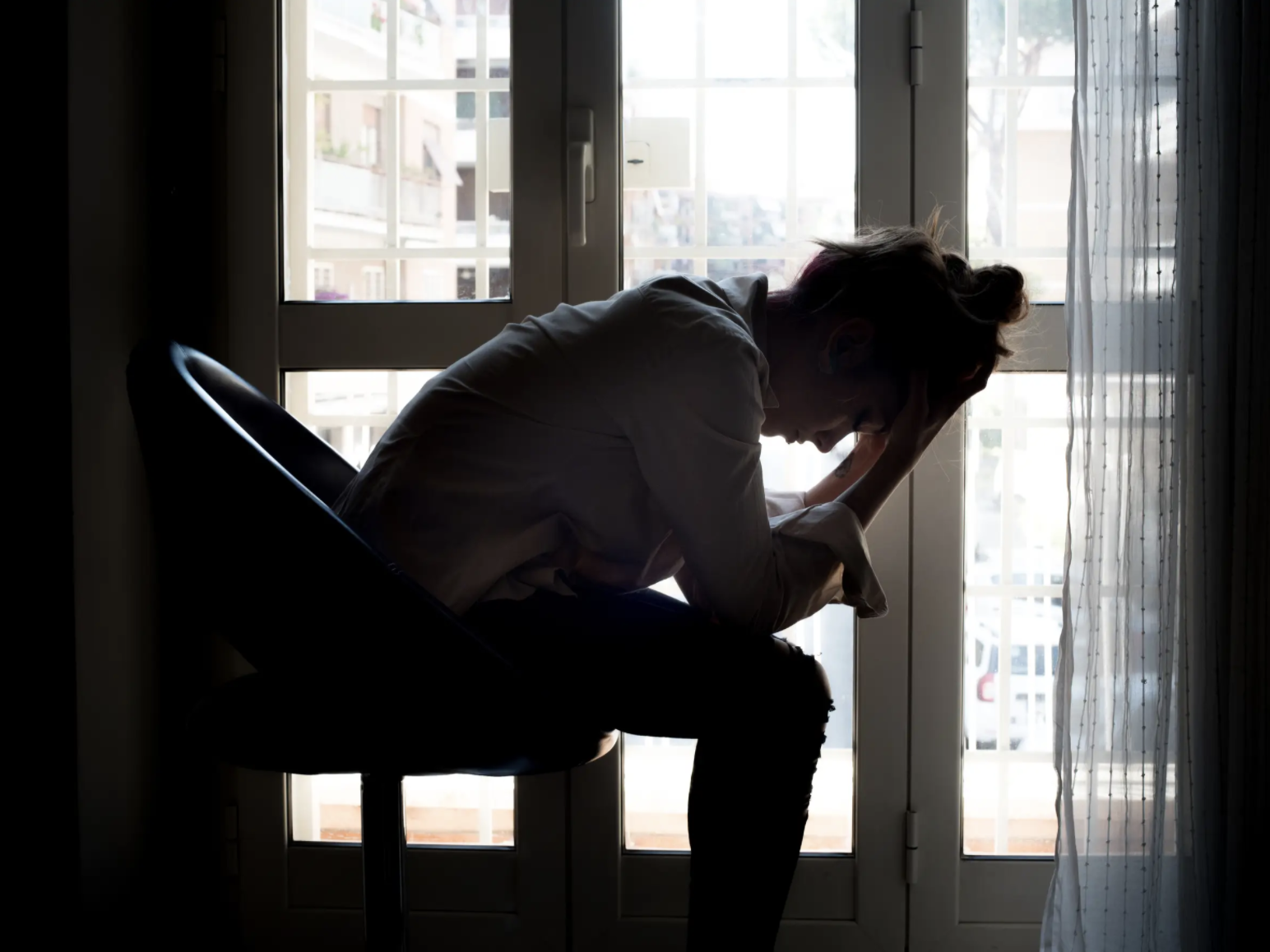
- Meghan Markle said she had suicidal thoughts after joining the royal family in 2018.
- In June 2020, 11% of Americans had similar feelings, according to the CDC.
- 40% of Americans reported some mental health issue or substance abuse related to the pandemic.
- Visit Insider's homepage for more stories.
Meghan Markle revealed she experienced suicidal thoughts in 2018 after joining the royal family and becoming the center of British tabloids' negative attention.
"I just didn't want to be alive anymore," Markle told Oprah Winfrey during a tell-all interview Sunday night.
An alarming number of Americans felt similarly in Summer 2020, with an August report out of the Centers for Disease Control and Prevention finding that 10.7% of Americans reported seriously contemplating suicide in the 30 days before the survey, issued over the last week of June, was conducted.
That's in contrast to the 4.3% who reported the same thing over the course of 2018. The percentages were far higher in certain populations, including ethnic and racial minorities, and essential workers.
The report, which surveyed 5,412 Americans, also found that about a quarter had symptoms of anxiety and about the same percentage had symptoms of depression.
That's three and four times higher, respectively, than those who met the same criteria during the second quarter of 2019.
About 13% of those surveyed said they increased or started using substances to cope with stress during June. In total, 40% of Americans reported mental health or substance use issues in June.
The report confirms what mental health experts predicted early in the pandemic, that stay-at-home orders, job losses, and otherwise life-upturning nature of the crisis could lead to a mental health crisis alongside the public health one.
"We keep ourselves busy to avoid having to deal with unpleasant memories, thoughts, and feelings, so ... I knew for some people the stay-at-home orders would be difficult for that fact alone," Brittany Johnson, a licensed mental health counselor in Indiana, said. "We spend all our lives trying to run."
Still, the authors say, the findings highlight "the broad impact" of the pandemic and the "urgent" need to treat and prevent its deadly ripple effects.
Unpaid caregivers and young adults are especially suffering
Certain populations reported exceptionally high rates of suicide ideation in June, with 30.7% of unpaid caregivers for adults reporting it.
While the survey didn't assess unpaid caregivers for children, unpaid caregivers for adults are often also taking care of children, compounding the stress on this population trying to keep older adults safe from COVID-19.
"When you think about the building blocks of stress, it fits," Johnson said. "That helplessness and hopelessness is what shows up in all of these categories, and that's what leads to suicide ideation and anxiety and depression."
Young adults are also buckling under multiple stressors, with 25.5% of 18-to-24-year-olds reporting seriously contemplating suicide last month.
Other reports have suggested that adolescents and young adults are the age group suffering most during the pandemic due to social isolation, a lack of independence, and the unknown about a future that once seemed bright.
"A number of kids are expressing that these are supposed to be the best years - high school and college - the most free years," Anne Marie Albano, a professor of medical psychology in psychiatry at Columbia University Irving Medical Center in New York, told the Wall Street Journal. "The possibility that COVID is going to completely change this period of their life, and they won't ever get it back, is overwhelming for a lot of them," she says.
Essential workers are also at high risk for suicide ideation, with 21.7% reporting experiencing it in June, the CDC report found. "They were having to carry, and have been carrying, America these last few months," Johnson said.
What's more, she added, they faced both the pressures of being hailed a community hero, "and on the other hand, they were also drowning in debt or not making enough to make ends meet."
Latinx and Black Americans were disproportionately affected
Racial and ethnic minorities were disproportionately affected too. The report said 18.6% of Hispanic and 15.1% of Black Americans reported seriously thinking about suicide in June.
That's likely an underestimate, though, since mental health issues tend to be especially stigmatized in the Black community, Johnson said. She said the centuries-long stress of being Black in America was exacerbated by the deaths of George Floyd, Ahmaud Arbery, and Breonna Taylor.
"For a lot of Black Americans and people of color in general, COVID was the least of their worries; they were just worried about how they were already going to survive."
The report underscores how the mental health response to the pandemic should be as robust as the public health one
Prior to the coronavirus pandemic, the US was grappling with a suicide crisis, with the rate rising 35% from 1999 to 2018. According to Centers for Disease Control and Prevention statistics, it's already the 10th-leading cause of death.
The current report emphasizes the immediate need to address it in both policy and on the ground, the authors write.
"The public health response to the COVID-19 pandemic should increase intervention and prevention efforts to address associated mental health conditions," they say. "Community-level efforts, including health communication strategies, should prioritize young adults, racial/ethnic minorities, essential workers, and unpaid adult caregivers."
Johnson said people who are feeling suicidal should call the suicide prevention hotline (1-800-273-8255) right away. "Please reach out because there is someone on the other side of the phone who can help," she said.
People feeling depressed or anxious should also reach out to therapists. Some offer free or discounted services, including group therapy that can now be virtually attended no matter where you live. "Do not suffer alone," she said.
She also recommends YouTube to find anxiety and depression relief techniques from professionals; her favorite technique is simply deep breathing.
"Give yourself grace, try not to be hard on yourself during this phase, give yourself some daily love," she said. "Find ways to give yourself some type of positive reinforcement every day."
